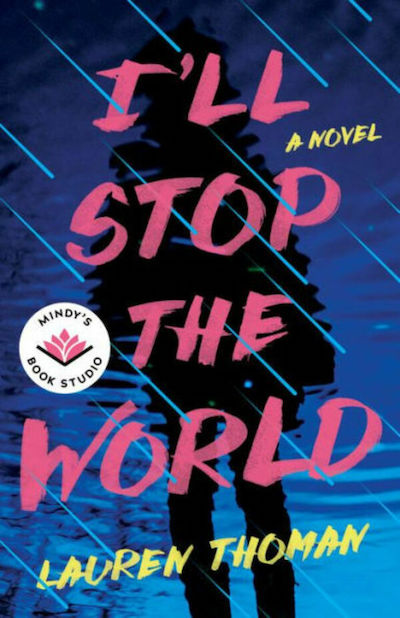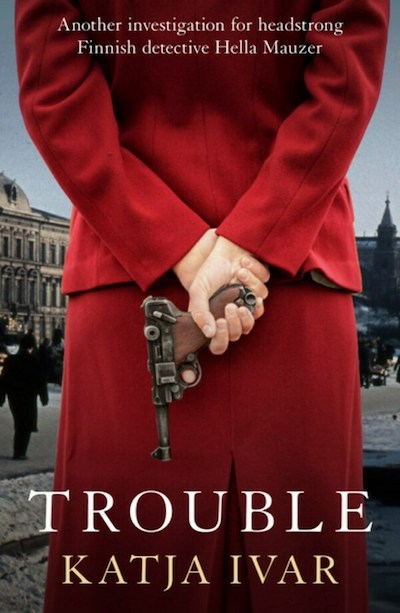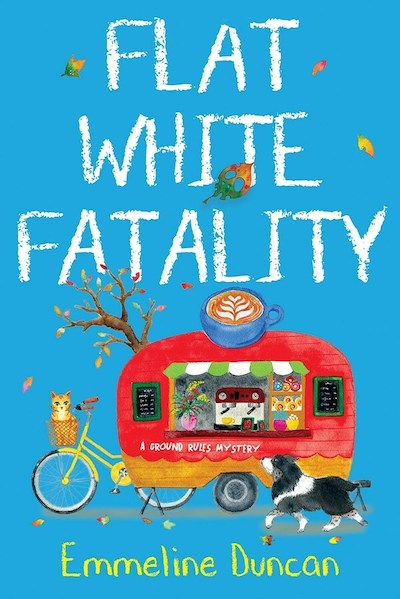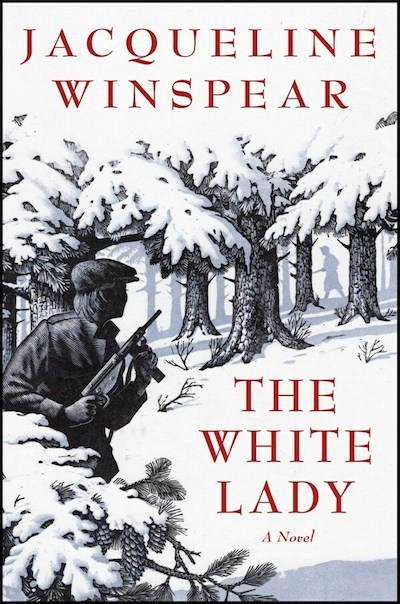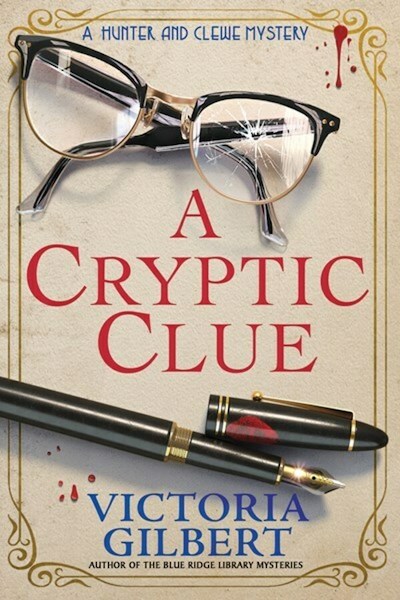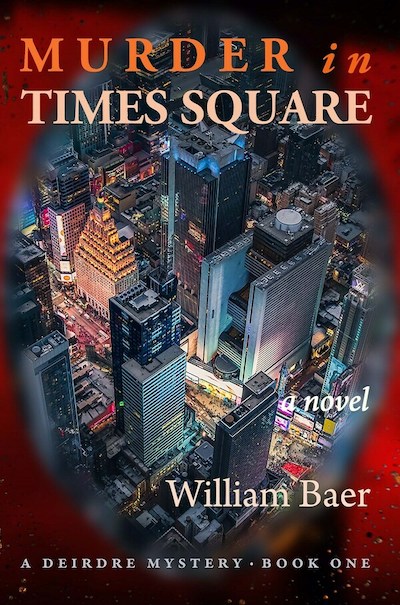An absolute delight, wonderfully written and with enough plot to keep the reader zooming through the book then quickly asking for more. Regency London is the setting and the twin Colebrook sisters, Lady Augusta (Gus) and Lady Julia, are our amateur detectives. Unusual for women of this period, they were left with personal incomes by their late father, allowing them independence and the ability to thumb their noses at their useless younger brother. In their early forties and unmarried, the two can’t bear the injustices they see heaped on the women around them, and Gus is determined to do something. When word reaches them that a friend’s goddaughter has been locked away by her husband with the intent to kill her—as she’s unable to have children—the sisters head off to spring her from her country house. Along the way, they pair up with an old interest of Gus’s, Lord Evan Belford, back from exile in Australia—it’s a long story—and hotter than ever. What’s unusually successful about this book is that instead of focusing on one case, the sisters take on a series, including one case in which Gus, disguised as a man, infiltrates a brothel. While their identities as detectives grow, several themes emerge, including Julia’s struggle with breast cancer, their need to surrender their home to their brother and his fiancé, and, of course, what to do with Lord Belford. The Regency era, feminism, and romance all work together to create a book that will delight many. And how about that cover?
Mystery & Detective
It might be a while since you read a book with teenage protagonists. It’s time. This coming-of-age story has characters who are adolescents to the core, spending their too-fast days on intense friendships, pulling away from parents, and fearing that their high school woes are their destiny. Small-town Warren High School in 2023 is the setting, and the story centers on Justin Warren, whose name is no coincidence: the school is named after his grandparents, who were killed in a fire at the school years before, his mother an infant in the car outside. Things haven’t gone well for Justin. He’s not going to college and he’s in love with his best friend, Alyssa Vizcaino (while they’re seatmates in every class because their last names “function as the alphabetical equivalent of an arranged marriage,” she’s not interested). Then there’s a bizarre twist: an accident throws Justin over a bridge and into…1985. He’s not born yet, his grandparents are still alive, and he still has a chance to change his 2023 lot in life. He meets fellow teen Rose Yin (he’s her pen pal who’s come for a fun visit!), and the two set out to solve a mystery that could mean the world to Justin. Romance is thrown in of course, including a sweet same-sex relationship; combined with the mystery and the tricky logistics of time traveling back to your own town and family in the past, this is one to recommend to book groups and all who like an emotional saga.
Hella Mauzer, 29, is both very much of Finland—she’s a dour private investigator who seems made from her country’s six-months of darkness —but completely not what her fellow 1950s Finns want her to be. Put flowers under your pillow on midsummer night and you’ll dream of your future fiancé, they hint, with marriage and motherhood then all but guaranteed. Hella wants none of it. She keeps both her ex-boyfriend, who can’t grasp that things are over, and her new, interested neighbor at arm’s length while immersed in two investigations. One is a favor to her father’s former secret-police colleague: a background check on the prospective head of Helsinki’s homicide squad. The other is more personal. Hella is desperate to find out who killed her parents, sister, and nephew, all of whom died when hit by a truck when Hella was a teen. Getting the courage to read the police file on her family’s deaths is a big step, and one that immediately leads her to suspect that there was much more to the tragedy than an accident. The background check is far from straightforward either, adding up to a tale that brings to mind Game of Thrones, with all that story’s evil and power-hungry machinations. If Scandinavian mysteries are your thing, try this, as well as Ann-Helén Laestadius’s Stolen, and Joachim B. Schmidt’s Kalman for great stories that take place outside the more common urban settings in Sweden and Denmark.
While I love an old-fashioned cozy as much as anyone—the guest everyone loathes is found dead on the library floor, a fatal slash across a carotid artery, or perhaps a touch too much monkshood in the afternoon tea?—I especially enjoy mysteries located in the present, with settings and characters that are fresh and idiosyncratic. This Portland (OR) based series, Ground Rules, fits the bill perfectly. In the first volume, barista and total hipster Sage Caplin just opens her new coffee cart when, as luck would have it, a corpse is found dead by her wheels. In Double Shot Death, the coffee cart is at a sustainable music festival—how PDX is that?—when a body is found in the woods clutching one of her coffee mugs. In Flat White Fatality, Sage has a side gig modeling as a character for her boyfriend’s game development company, Grumpy Sasquatch Studio. But then, during a team-building event, the most annoying of the company’s coders is murdered, in Sage’s own roastery no less. When another employee is almost killed, Sage realizes she needs to step it up and find the murderer before she becomes suspect number one. Plenty of satire, lots of fascinating local detail, excellent friends and family, and an insider look at the world of special coffees.
A particular type of horror needs nothing supernatural: It’s when a mundane task suddenly requires every ounce of will and wits to survive. Police officer Elise Sutton is shopping for towels—her kids have been hinting that the threadbare affairs they’ve been using are not the world’s only towels, but who has the time?—when her training kicks into gear: there’s a shooter in the store. The scene that unfolds is a highlight of the book, though far from the only tense moment, and a meticulous portrait of human nature under pressure. Elise gets the gunman in her sight as he takes aim at a tall man who then escapes; the gunman is killed by Elise and the clothing racks come alive with shoppers who were hiding, terrified. Elise must now deal with her own trauma, having killed a man, and with the doubt that plagues her: did she need to kill him? Just as readers settle in for a tale about survivor’s guilt and PTSD, the story takes a turn: the tall man shows up, way too grateful for being saved, and by the time Elise realizes that he’s acting oddly, he’s become her obsessed stalker. Alternating with this inward-focused tale of one woman’s turmoil and peril is the saga of a burned body that’s found in the Connecticut woods, in an oven used by hunters. Finding out how these stories are related, and whether Elise’s marriage and career can survive the terror she faces, makes the pages turn quickly. Ideal for those who enjoyed Ian McEwan’s Enduring Love, another tale of obsession.
Jacqueline Winspear, author of the hugely popular mystery Maisie Dobbbs series set in England during WWII, here moves into the post-war world with a new heroine. Elinor White has had a lifetime of espionage. Born in Brussels, daughters of a British mother and a Belgian father who died in the early years of the WWI, she and her older sister spent WWI in Brussels, working as trained spies, going so far as derailing German supply trains in the dead of night. By age 14, already an expert markswoman, Elinor moves with her family to England. But by the beginning of WWII, she’s back in the espionage game, although eventually a terrible injury behind enemy lines sends her back to England and a lengthy hospitalization. When the war finally ends, she moves to the country, promising to forget the past and live a life of monotony. But when the lives of a neighboring family are threatened—they too are seeking anonymity—Elinor becomes involved, facing the country’s largest crime family head on. Throughout, readers will sense that Elinor is keeping something from us, and when her secret is finally revealed it brings about a type of healing. As always, Winspear is brilliant at bringing us into the past and into the lives of women, so often left out of accounts of war efforts. Winspear fans will find much to enjoy here, as will other readers of historical fiction.
Having loved Nonna Maria and the Runaway Bride, I started Carcaterra’s second in the series with some trepidation. Would it hold up to the first? But I’m happy to report that the newest Nonna book provides all the pleasures of the earlier title—and then some. If you aren’t familiar with Nonna Maria, then make it a point to remedy that. A widowed grandmother, Nonna Maria, in an oh-so-subtle way, runs the island of Ischia, just 20 miles from Naples. Through her myriad connections, which include the carabinieri, members of organized crime, the clergy, and of course family, Nonna rights many wrongs—all while cooking the most delectable meals. In this installment, Nonna Maria’s goddaughter, who works as a maid, is accused of stealing a necklace while a woman, who was once a native, returns to the island, only to be murdered. Through Nonna’s investigations, we learn more about how the island, and its economy, is changing, while the conservative social mores that are such a part of island life live on. Cozy readers will love this book both for the indomitable character of Nonna Maria and the chance to travel to this paradise in the Bay of Naples.
A former university librarian, forced into early retirement, takes on a new job cataloging a book collection, only to find herself spending more time solving a crime than applying the Library of Congress subject headings. Jane Hunter is making lots of changes in her life. She’s downsized her home, is living alone—her actress daughter is off on a national tour—and is about to bring in some much-needed funds by cataloging 33-year-old Cameron “Cam” Clewe’s vast crime fiction collection. But on the first day at the job, at Cam’s sprawling mansion, she discovers—wouldn’t you know it?—a corpse on the floor of the library. And not just any corpse. Cam’s latest ex-girlfriend. To make matters worse, several people saw the couple arguing the night before. With handsome Cam the number one suspect, if Jane wants to keep her job, she’s got to keep her boss out of jail, so the two team up to find the real perp. The fun here is in what an odd couple they make. Sherlock Cam has “anxiety, OCD, occasional depression, and a general lack of social awareness.” And while Watson Jane may not have been diagnosed with anything listed in the DSM-5, she’s darn nosey, quite pushy, a bit of a rumor monger, and has some dubious professional ethics (she brings items home, and shows them to a neighbor, without Cam’s permission.) Everything is in place here for a successful series sure to delight traditional cozy readers for years to come. Now let these two go at each other.
A wonderful, moving stand-alone in which Sutanto, author of the Aunties series, is at the absolute top of her game. Sixty-year-old Vera Wong is lonely, although she’d never admit it. A widower, she’s the mother of a lawyer consumed by work—he rarely returns her texts, even though she offers such good advice!— and her days consist of a 6 am brisk walk through San Francisco’s Chinatown—she needs to get her steps in!—then opening her tea shop which, on the best of days, has only one customer. Extraordinarily opinionated, quite a bit eccentric, yet utterly charming, Vera’s voice is captivating. But readers will be completely beguiled after she comes downstairs one morning (she lives above the shop) and discovers a young man lying on the floor. She does call the cops, and tries her very, very best not to disturb the crime scene, but not before prying a flash drive out of the man’s very dead hands. Then the novel takes off as Vera—believing the cops are incapable of solving the crime—assumes the role of detective. In the process, she befriends several young people, including both the victim’s wife and his brother, and while Vera still considers them all to be prime suspects, she can’t help but care for them. Initially this protagonist may seem like the cliché of the dominating Chinese mom. But Vera, it turns out, is pretty damaged herself, much like her new, thirty-something friends. Come for the mystery, but stay for the healing. One of the best cozies I’ve read this year.
his series debut features a woman who’s so glamorous and strong she has a superhero persona, complete with the superhero’s inner conflict. Deirdre Flanagan is a model, a beautiful 19-year-old who purposely makes herself uglier in daily life so she can pass unnoticed. While she loves clothes and the drama of a professional fashion shoot, modeling is very much her nine to five. In her spare time, she works with her doting father and his brother—they’re a former world-champion boxer and an NYC police captain, respectively, and the only parents she has known—to solve crimes against young women. When a woman in a striking red dress falls to her death from the roof of 1 Times Square, Deirdre hits the scene, finding another body as well as unexpected emotions upon viewing the remains. Why this case has hit her so hard and whether she can escape the escalating danger facing those involved with the victim and the case is a mystery that will keep readers rapt—although they’ll also enjoy being dropped into the world of New York City haute couture. Baer, who worked briefly in that world and is the author of the successful Jack Colt series, also offers a gritty contrast to the ritziness of fashion in his protagonist’s personal life: home is her father’s boxing gym, and between that setting and her life as an NYPD sidekick, the sarcasm and bullets keep flying. A fast, absorbing introduction to a daring star.


